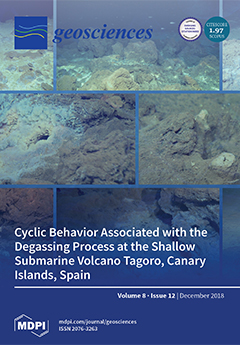Malaysia is anticipating an increase of 68.86% in CO
2 emission in 2020, compared with the 2000 baseline, reaching 285.73 million tonnes. A major contributor to Malaysia’s CO
2 emissions is coal-fired electricity power plants, responsible for 43.4% of the overall emissions. Malaysia’s
[...] Read more.
Malaysia is anticipating an increase of 68.86% in CO
2 emission in 2020, compared with the 2000 baseline, reaching 285.73 million tonnes. A major contributor to Malaysia’s CO
2 emissions is coal-fired electricity power plants, responsible for 43.4% of the overall emissions. Malaysia’s forest soil offers organic sequestration of 15 tonnes of CO
2 ha
−1·year
−1. Unlike organic CO
2 sequestration in soil, inorganic sequestration of CO
2 through mineral carbonation, once formed, is considered as a permanent sink. Inorganic CO
2 sequestration in Malaysia has not been extensively studied, and the country’s potential for using the technique for atmospheric CO
2 removal is undefined. In addition, Malaysia produces a significant amount of solid waste annually and, of that, demolition concrete waste, basalt quarry fine, and fly and bottom ashes are calcium-rich materials suitable for inorganic CO
2 sequestration. This project introduces a potential solution for sequestering atmospheric CO
2 inorganically for Malaysia. If lands associated to future developments in Malaysia are designed for inorganic CO
2 sequestration using demolition concrete waste, basalt quarry fine, and fly and bottom ashes, 597,465 tonnes of CO
2 can be captured annually adding a potential annual economic benefit of €4,700,000.
Full article





